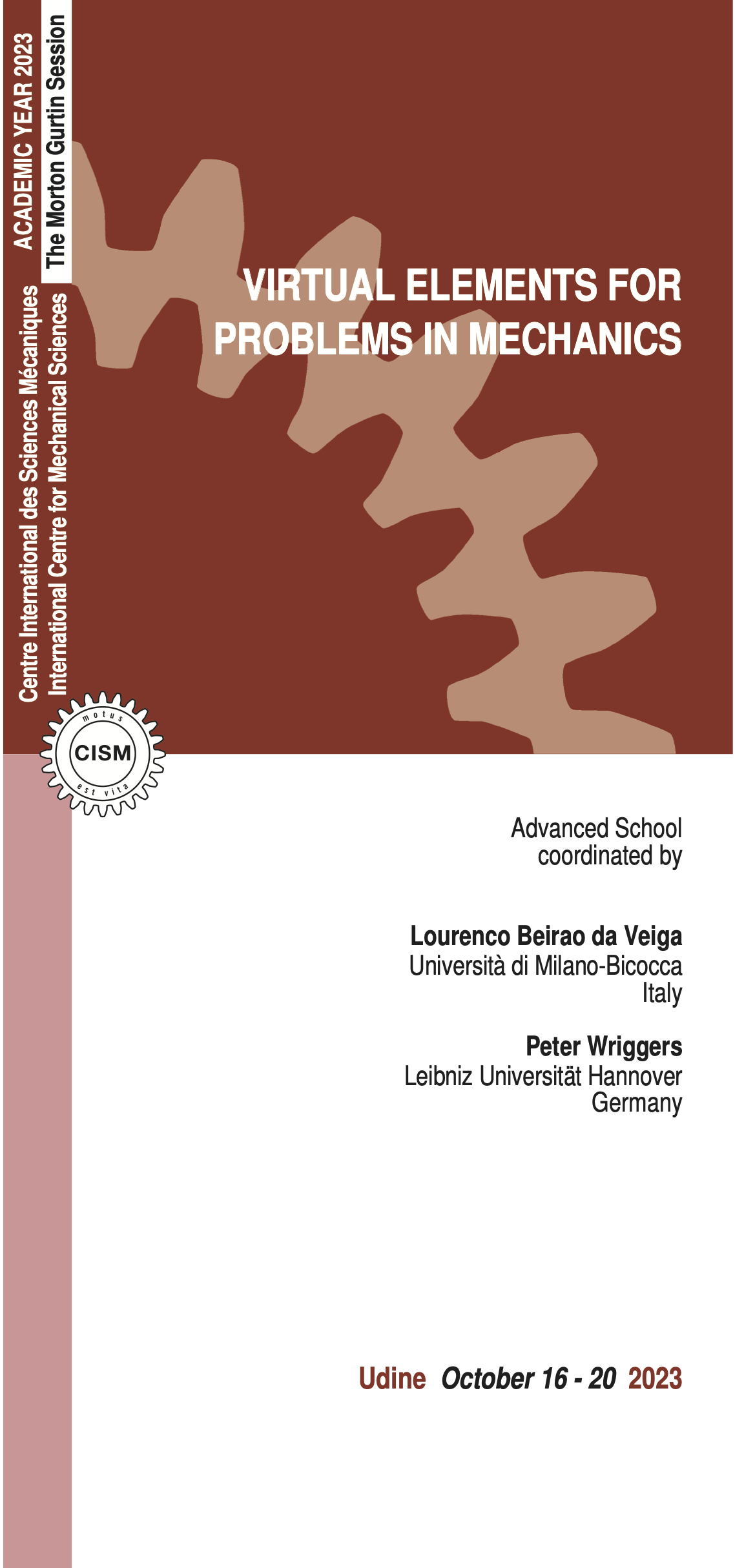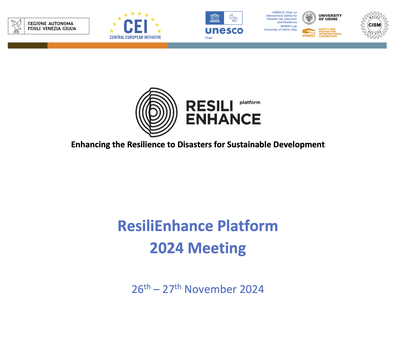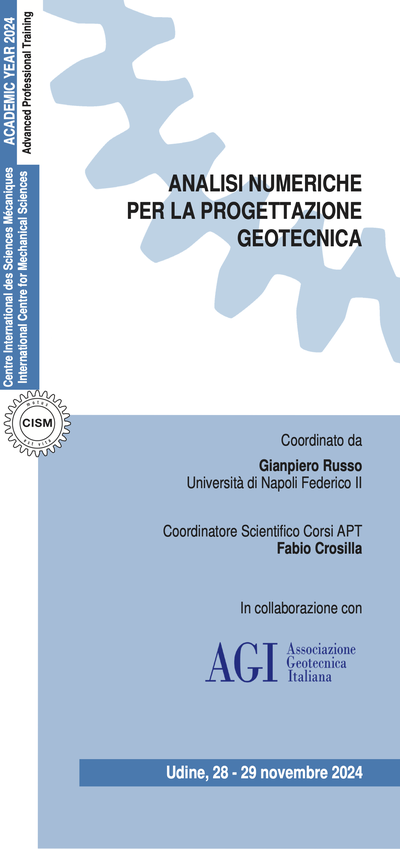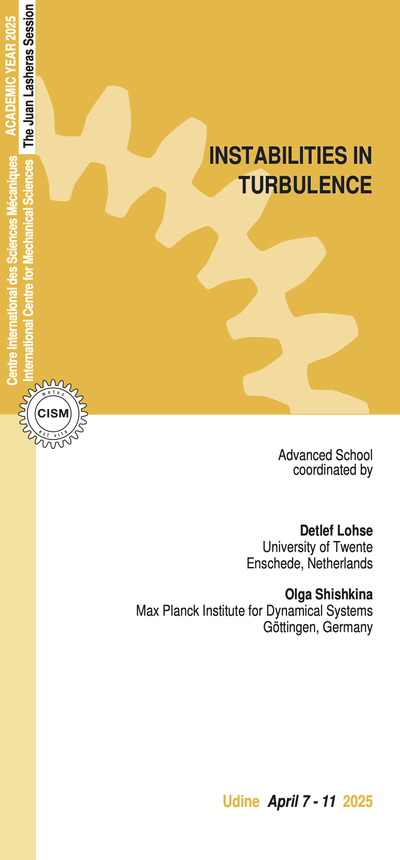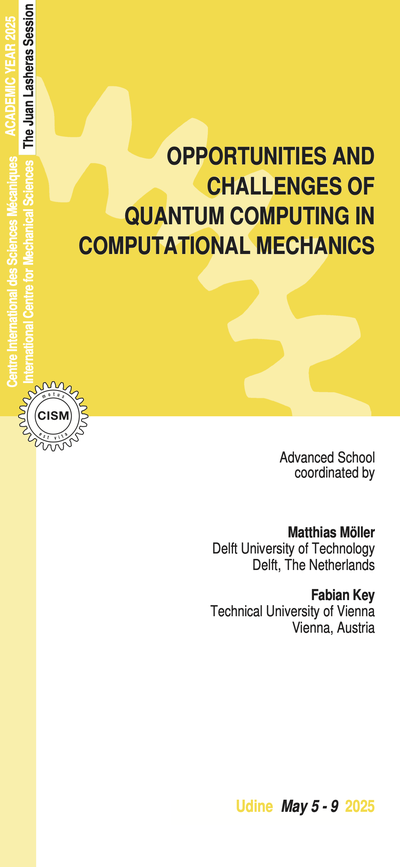The Virtual Element Method (VEM) is a recent methodology for the approximation of problems described by partial differential equations. VEM can be considered as a generalization of Finite Elements.
The main asset of VEM is the possibility of using mesh elements with arbitrary geometrical forms, thus allowing very complex meshes within a Galerkin type approximation. Such feature opens up a significant flexibility for the discretization and also the design of algorithms, even for low order ansatz spaces.
The VEM permits the use of polygonal elements for problems in 2D and polyhedral elements in 3D. Meshes can consist of elements with different shapes from convex to non-convex forms and different number of nodes. Despite this variety of different element geometries, the mesh provides a continuous discretization.
The aim of the course is to present theoretical fundamentals, the current state-of-the art, and future directions of “computational approaches for the analysis of the mechanics of materials” using VEM. So far, the method has been successfully applied in many areas of solid mechanics, such as elastic and inelastic numerical simulation of solids for small and finite strains, crystal plasticity, coupled problems, fracture mechanics, homogenization procedures, plate problems, contact problems. These areas will be covered throughout the course, so that the broad applicability of virtual element schemes will be evident to the participants. In addition, areas outside solid mechanics will be addressed, such as Navier-Stokes flow, magnetostatics and phase transition.
Naturally all methods have advantages and disadvantages; these will be discussed in depth to provide a clear view about the applicability of VEM to engineering problems. The course will also emphasize the mathematical formulation of the different ansatz spaces and investigate the relations with the Finite Element Method.
In the course we will explore the advantageous features of the virtual element method from the engineering and mathematical view. This includes the discussion of the use of VEM for non-matching meshes in contact mechanics, the arbitrary shape of the elements in homogenization of polycrystal materials, the exact imposition of the incompressibility constraint in fluid and solid mechanics, the treatment of cracks, the use of curved elements for exact geometry representation and other applications in engineering.
One of the keys to the understanding of a new technique is to illustrate it in the context of the necessary software. This will be done in workshop sessions based on MATLAB and the automatic tools AceGen and AceFem.
The language of Mechanics will be employed together with Mathematics as the transport vehicle, for providing lectures in a consistent, broad, and equilibrated format. The course will appeal to doctoral students and postdoctoral researchers from academia and industry with an interest in the response of materials and structures, and a background in civil or mechanical engineering or in material sciences.
The Virtual Element Method and its Applications, SEMA-SIMAI Springer Series Vol. 31, Editors P. Antonietti, L. Beirao da Veiga, G. Manzini (2022).
Basic principles of Virtual Element Methods, L. Beirao da Veiga, F. Brezzi, A. Cangiani, L.D. Marini, G. Manzini and A. Russo, Math. Models and Meth. Appl. Sci. 23:199-214 (2013).
The Hitchhiker's Guide to the Virtual Element Method, L. Beirao da Veiga, F. Brezzi, L. D. Marini and A. Russo, Math. Mod. Meth. Appl. Sci. 24: 1541-1573 (2014).
Numerical Integration of Homogeneous Functions on Convex and Nonconvex Polygons and Polyhedra, E. B. Chin, J. B. Lasserre and N. Sukumar, Computational Mechanics, Vol. 56:967–981 (2015).
A virtual element method for contact, P. Wriggers, W. Rust and B.D. Reddy, Computational Mechanics, 58, 1039-1050 (2016).
Efficient virtual element formulations for compressible and incompressible finite deformations, P. Wriggers, B.D. Reddy, W. Rust and B. Hudobivnik. Computational Mechanics, 60, 253-268 (2017).
Arbitrary order 2D virtual elements for polygonal meshes: part II, inelastic problem, E. Artioli, L. Beirao da Veiga, C. Lovadina and E. Sacco, Comput. Mech. 60: 643-657 (2017).
Automation of finite element methods, J. Korelc, P. Wriggers. Springer (2016).
5 lectures on: Virtual Elements for 2D Solid Mechanics.
The lectures will address VEM for 2D solid mechanics in infinitesimal strain regime, with focus on mesh generation, adaptivity, degree elevation, curvilinear geometries, and including applications such as computational homogenization and crack propagation. An in-house MATLAB code will be presented and made available to the students.
6 lectures on: Introduction to Virtual Elements and further developments in plate and fluid mechanics.
The first part of the lectures will focus on introducing the VEM on a elliptic scalar model problem, in 2D and 3D. Afterwards, we will address C1 global continuous elements, with applications to plate bending problems and phase transition. Finally, we will introduce VEM for fluid mechanics problems.
6 lectures on: Automation of the virtual element method for engineering applications.
The lectures will focus on aspects of automation of computational modelling with an emphasis on VEM. Automatic differentiation-based formulations are introduced for coupled, path-depended problems. Symbolic descriptions of VEM using the code generator AceGen are discussed and implemented in the environment AceFEM.
6 lectures on: From polyhedral FEM to the Virtual Element Method, with a focus on geometry and integration.
The first part of the lectures will describe polytopal finite elements that use generalized barycentric coordinates as basis functions. The second part presents numerical integration schemes on polytopes. Finally, we discuss how bad-quality tetrahedral meshes can be rectified using VEM and a stabilization-free VEM for elasticity.6 lectures on: Virtual Element Implementation, extension to curved edges/faces and connections with FEM.
Initially we will introduce the implementation of VEM in MATLAB for a scalar model problem. Afterwards we will be concerned with the extension of VEM to elements with curved edges/faces. Finally we will discuss connections of VEM with classical Finite Elements and how to best combine the two approaches.
6 lectures on: Engineering Introduction to Virtual Elements (VEM); Application of VEM to nonlinear problems in mechanics; contact problems using VEM.
The first part of the lectures will consider an introduction on the basis of one-dimensional structural elements. The second part focusses on nonlinear applications in solid mechanics including fracture mechanics and computational homogenization. Contact mechanics will be treated in the third part of the lectures.
ADMISSION AND ACCOMMODATION
The course is offered in a hybrid format giving the possibility to attend the course also by remote (on Microsoft Teams platform). On-site places are limited and assigned on first come first served basis.
The registration fees are:
On-site participation, 600.00 Euro + VAT*
This fee includes a complimentary bag, five fixed menu buffet lunches, hot beverages, downloadable lecture notes.
Deadline for on-site application is September 16, 2023.
Online participation, 250.00 Euro + VAT*
This fee includes downloadable lecture notes.
Deadline for online application is October 4, 2023.
Application forms should be sent on-line through the following web site: http://www.cism.it
A message of confirmation will be sent to accepted participants.
Upon request a limited number of on-site participants can be accommodated at CISM Guest House at the price of 35 Euro per person/night (mail to: foresteria@cism.it).
* where applicable (bank charges are not included) Italian VAT is 22%.
CANCELLATION POLICY
Applicants may cancel their registration and receive a full refund by notifying CISM Secretariat in writing (by email) no later than:
- September 16, 2023 for on-site participants (no refund after the deadline);
- August 4, 2023 for online participants (no refund after the deadline).
Cancellation requests received before these deadlines will be charged a 50.00 Euro handling fee. Incorrect payments are subject to Euro 50,00 handling fee.
GRANTS
A limited number of participants from universities and research centres who are not supported by their own institutions can request the waiver of the registration fee and/or free lodging.
Requests should be sent to CISM Secretariat by August 16, 2023 along with the applicant's curriculum and a letter of recommendation by the head of the department or a supervisor confirming that the institute cannot provide funding. Preference will be given to applicants from countries that sponsor CISM.
